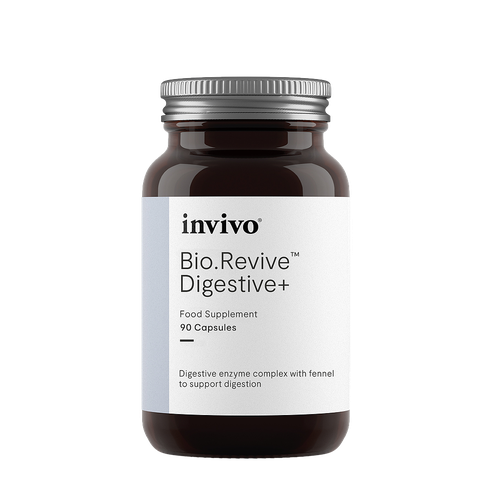Urinary Tract Infections: The Problem
UTIs are one of the most common types of infection which pose a significant burden on the quality of life of millions.¹ They are 8x more prevalent in women than men and 50-60% of adult women will experience at least one uncomplicated UTI during their lifetime.² ³ This common type of UTI drives a range of deeply uncomfortable symptoms, not least significant pain upon urination, blood in urine, and urinary incontinence, in the absence of functional or anatomical impairment of the urinary tract or significant impairment of kidney function.
There is a spike in prevalence during the years of maximum sexual activity which is usually between 18-39 years, as well as with increasing age to the degree that around 10% of postmenopausal women report having experienced a UTI episode during the previous year.⁴ Other at-risk groups include infants, pregnant women, patients with catheters, and diabetics, to name just a few.³ The societal need for effective solutions for the prevention and management of UTIs could not be more evident.
One of the most significant issues with uncomplicated UTIs is their propensity to become a recurrent problem. Recurrent uncomplicated UTIs (rUTIs) involve the occurrence of two or more symptomatic episodes within 6 months or three or more within 12 months. In fact, around 30% of women experience a UTI recurrence within 6 months of their first episode.⁴ This can go on to put an immense burden on emotional as well as physical health, which is certainly what we see in clinical practice.
An important observational study assessing the quality of life (QoL) impact of rUTIs found that 61.9% of patients (n=575) exhibited some degree of depression⁵. Another major cause of concern is the serious complications which can arise from UTIs, not least pyelonephritis (when the infection reaches the kidneys) and sepsis (when the infection reaches the blood), both of which require hospital admission and urgent treatment.
With the growing problem of antibiotic resistance, it is staggering to learn that around 1 in 3 women will experience at least one UTI treated with antibiotics by just 24 years of age.³ With the treatment of UTIs so heavily dependent on antibiotics, complementary solutions with demonstrated efficacy for urinary tract health are a necessity, as concluded by several researchers in the field ¹ ²
The Urinary Microbiome
It was long believed that the urinary tract was sterile except in the case of active infections, which we know to be driven by a range of uropathogens (microbes which cause infection of the urinary tract), including uropathogenic Escherichia coli (E.coli) (UPEC), Enterococcus faecalis, Proteus mirabilis, Staphylococcus saprophyticus, Pseudomonas aeruginosa, Klebsiella pneumoniae, and Candida albicans.
Thanks to technological advancements, namely the development of DNA microbial analysis, it is now understood that the urinary tract is inhabited by non-infection-associated micro-organisms too and harbours its own resident commensal microbial community.⁶ ⁷ The urinary microbiome appears to be dominated by Lactobacillus, followed by other genera to a lesser degree, including Streptococcus, Staphylococcus, Corynebacteria, Escherichia, Aerococcus, and Gardnerella. While it is important to recognise that research into the urinary microbiome is still in its infancy, there is no doubt that the urinary microbiome has a formative impact on urinary tract health, for better or for worse.⁸ ⁹
Introducing the Gut-Vagina-Bladder-Axis
We often talk about the crosstalk between and interconnectedness of the different microbiome niches in the human body, including how the oral, gut, vaginal, and urinary microbiome influence each other and, in turn, the health of us, the human, in which these microbes reside. This is especially relevant when it comes to the urinary microbiome and the overall health of the urinary tract given the complex crosstalk which occurs via the gut-vagina/gut-bladder/vagina-bladder axis,¹⁰ or the gut-vagina-bladder axis for short. The gut-kidney axis also exists, whereby gut dysbiosis can drive various renal disorders such as chronic kidney disease (CKD) and kidney stones
It is well-established that the gut microbiome can affect the health of most, if not all, organs within the human body.¹¹ This is certainly the case for the organs of the urinary tract. Composition of the gut microbiome can impact that of the urinary microbiome due to the ability of intestinal bacteria to translocate from the perianal region up towards the vagina and urethra.¹² A key example of this is E. coli and Enterococcus which have been identified in the gut microbiome of those prone to UTIs.¹³ ¹⁴ ¹⁵
Intestinal uropathogens can translocate from the gut to the urinary tract after being shed in the faeces. They can ascend to the bladder following colonisation of the periurethral region and go on to grow and multiply after successful adhesion and colonisation of the bladder epithelium. Such translocation of bacteria might help to account for the increased prevalence of UTIs in women bearing in mind the close proximity of the urethra to the anus, the shortness of the female urethra, and the warm and moist environment of the perineum and vagina which may foster the overgrowth of uropathogenic bacteria¹⁶
On the other side of the equation, a state of eubiosis in the gut (a balanced microbiome) with high relative abundance of two key commensal bacterial taxa – Faecalibacterium and Romboutsia – is associated with a decreased risk of UTIs, especially Enterobacter mediated.¹⁷ Thus, the research available to date demonstrates that the gut microbiome can either have a protective or pathogenic effect on urinary tract health and is an important microbiome site to support for those prone to UTIs.
Moving now to the vagina-bladder axis, comparison of the vaginal and urinary microbiomes has shown that they significantly overlap, with Lactobacillus the most abundant genus in both, followed by an overlap of other strains such as Gardnerella, Prevotella, and Ureaplasma¹⁸. It is therefore unsurprising that one of the most common vaginal health conditions, bacterial vaginosis (BV), is strongly associated with an increased risk of UTIs.¹⁶
BV is associated with an overgrowth of anaerobic bacteria in the vagina, such as Gardnerella vaginalis, alongside a depleted Lactobacillus colony and an alkaline vaginal pH. G. vaginalis, for example, has been identified in the urinary microbiome of those with UTIs.¹⁹ Preliminary animal studies have demonstrated the capacity of this species to trigger damage to the bladder surface and re-activate latent E. coli and trigger an E.coli mediated rUTI. This finding has led to the ‘covert pathogenesis’ theory, in which G. vaginalis may transiently ascend into the urinary tract from the vagina, trigger an already indwelling urinary E. coli infection, and then leave the ‘crime scene’ so to speak.²⁰
So, like the gut, the vaginal microbiome can act as a reservoir for uropathogenic microbes which can ascend into the urinary tract. This finding is reinforced by the recent finding that women with rUTIs usually have a high abundance of E. coli in their vaginal microbiome as well.²¹
Such crosstalk along the gut-vagina-bladder axis is likely mediated by prior disruption to protective Lactobacilli colonies which otherwise have a formative role in staving off opportunistic microbial overgrowth in the gut, vaginal, and urinary microbiome. For instance, high relative abundance of Lactobacilli in the vaginal microbiome of postmenopausal women has been shown to reduce the risk of vaginal colonisation with E. coli.²² This may then confer a protective benefit against UTIs. Such depletion of Lactobacilli can be driven by various environmental and endogenous stimuli, ranging from low oestrogen during the menopause²² to antibiotic use²³, which disrupt these niches in the body and make it easier for opportunistic bacteria to proliferate and migrate up and into the urinary tract.
How to Support the Gut-Vagina-Bladder Microbiome
…Recognizing factors that affect both the gut and vaginal microbiota is indispensable for understanding the pathogenesis of UTI, and designing interventions to prevent it.
Meštrović, T., et al (2020)10
We could not agree more. To support the prevention and management of UTIs, we need to restore balance to the urinary ecosystem by harmonising the gut-bladder-vagina axis. The following steps can be useful:
- For those with chronic or recurrent UTIs, it is worth considering a urinary microbiome test which utilises advanced qPCR DNA testing technology. Such a test can assess the presence of a wide range of microbes which could be implicated in UTI risk, including microbes which are difficult to culture such as Actinotignum schaalii, as well as the robustness of the urinary Lactobacillus colony. The wealth of information gleaned can then complement that obtained from traditional dipstick and culture methods and facilitate the implementation of a personalised protocol. For example, if the Lactobacillus colony is shown to be depleted, this information opens another therapeutic avenue, mainly the use of targeted probiotic strains for urinary tract health.
- It can also be helpful to comprehensively investigate the gut microbiome and/or vaginal microbiome too since both microbiome sites can be reservoirs of UTI-implicated opportunistic microbes, such as E. coli, E. faecalis, and G. vaginalis. This can pave the way for targeted microbiome interventions to bring balance back to these microbiome sites too, as guided by a health professional, which might in turn help to further re-balance the urinary microbiota.
- There has been a lot of research attention into the potential benefit of targeted live bacteria supplementation for reducing the risk of UTIs.²⁴ ²⁵ In vitro research has highlighted the ability of an oral live bacteria blend consisting of L. plantarum W21, L. acidophilus W22, L. salivarius W24, L. casei W56, L. helveticus W74, Lactobacillus pentosus W2 (KCA1), and L. brevis W63 to inhibit the growth of various uropathogens, including E. coli, C. albicans, S. aureus, and P. aeruginosa. This likely occurs via a wide range of mechanisms, including the production of antibacterial agents such as lactic acid, hydrogen peroxide, and bacteriocins, competition with uropathogens for attachment sites and nutrients, and strengthening the epithelial barrier to improve its resilience to infection.
- Explore additional natural interventions to help inhibit adhesion of uropathogens to the lining of the urinary tract, including cranberry², D-mannose²⁶, and hibiscus.²⁷
- At the same time, it is imperative to identify and address the systemic drivers of low resilience of the urinary tract to infection. These include, but are not limited to, blood glucose dysregulation, low immunity, dehydration, and impaired structural integrity of the urothelium (lining of the urinary tract) which arises due to a lack of oestrogen (e.g. during menopause) and insufficient nutrient status, especially vitamin A, C, zinc, and vitamin D. Indeed, vitamin D has the ability to stimulate the production of anti-microbial substances in the urinary epithelium, notably cathelicidin, when exposed to pathogenic bacteria which may help to strengthen the mucosal immunity of the urinary tract and make it more resilient to infection.²⁸ ²⁹
There is hope on the horizon for those with chronic urinary issues thanks to exciting, cutting-edge research into the urinary microbiome, its interaction with the gut and vaginal microbiome, and the immense potential of natural interventions to help bring balance back to these microbiome sites, notably the use of targeted probiotic strains for urinary health.




